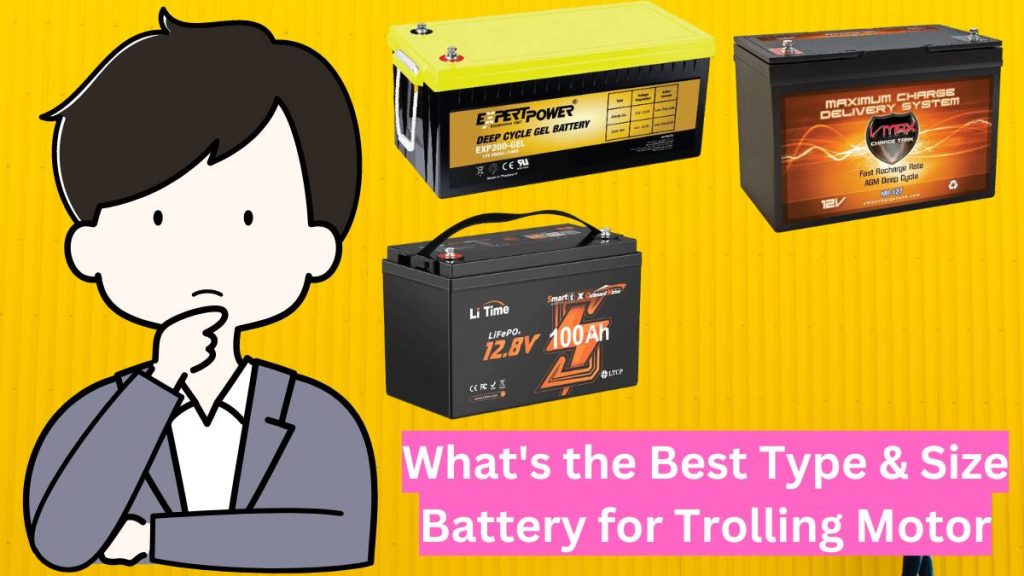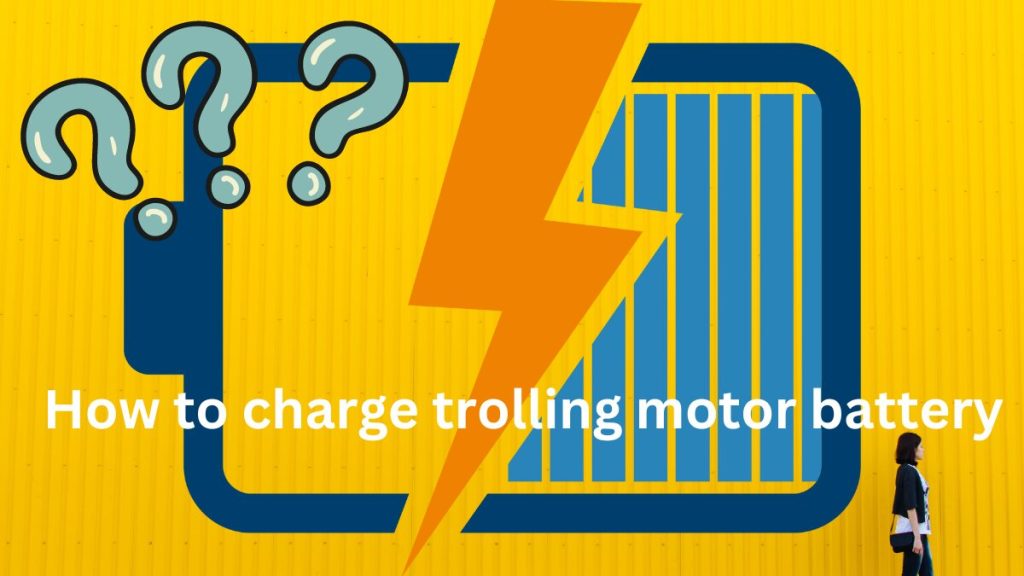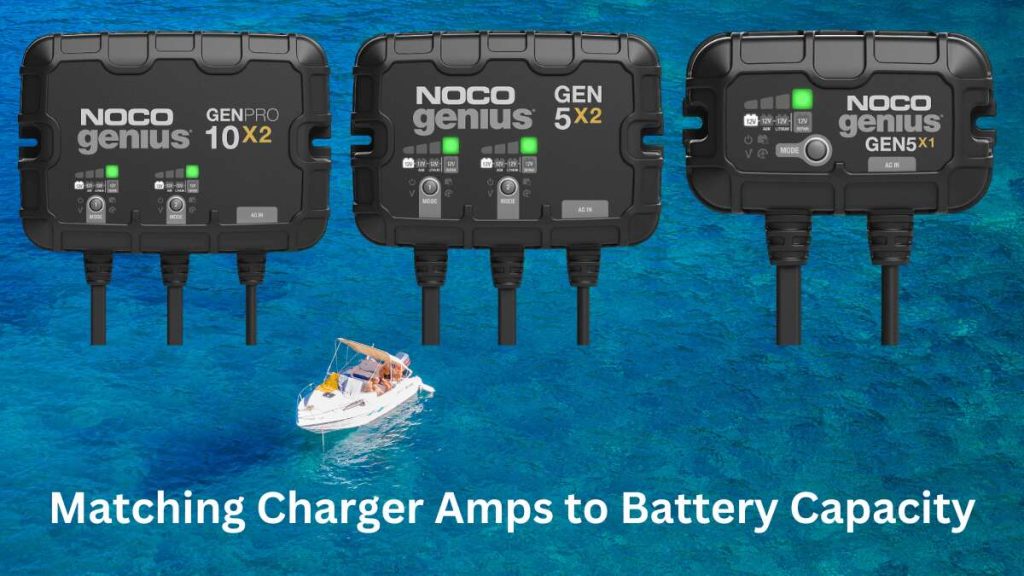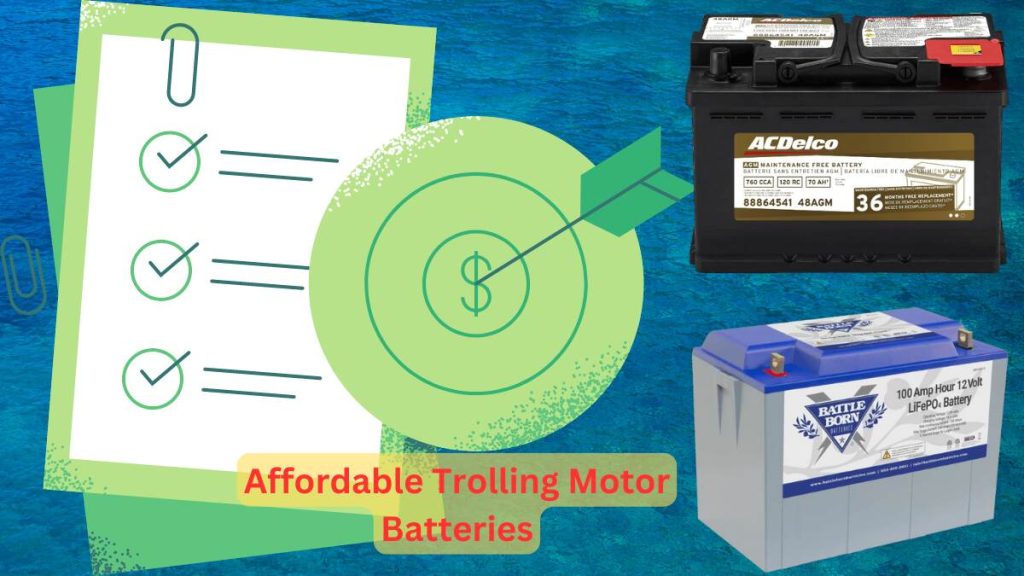Choosing the right battery for your trolling motor can be a daunting task, especially with the wide variety of options available on the market today. Whether you’re an avid angler who spends countless hours on the water or a recreational boater who enjoys peaceful days gliding across the lake, the performance of your trolling motor is largely dependent on the kind of battery you use. The question of “what kind of battery for trolling motor” is crucial, as the wrong choice can leave you stranded or cut your trip short due to insufficient power. Trolling motors require a reliable power source to operate efficiently, and understanding the differences between various battery types is key to making an informed decision.
what kind of battery for trolling motor
When it comes to trolling motors, not all batteries are created equal. The type of battery you choose will impact not only how long you can stay on the water but also how well your motor performs under different conditions. From traditional lead-acid batteries to modern lithium-ion options, each type has its pros and cons, and what works best for one boater might not be ideal for another. Factors such as battery capacity, voltage, weight, and maintenance requirements all play a significant role in determining the best battery for your needs. Additionally, considering the environmental impact and long-term cost-effectiveness of your choice can help ensure that you’re not just picking a battery that works for today, but one that will serve you well for years to come. In this article, we’ll explore in detail what kind of battery for trolling motor is best suited for your specific setup, ensuring you get the most out of your time on the water.
Types of Batteries for Trolling Motors
Choosing the right battery for your trolling motor is crucial for optimal performance, and understanding the different types available can help you make an informed decision. Here, we’ll delve into the four main types of batteries commonly used for trolling motors: Lead-Acid, Lithium-Ion, AGM (Absorbed Glass Mat), and Gel batteries. Each type has its unique characteristics, advantages, and drawbacks, which are important to consider based on your specific needs and boating conditions.
Lead-Acid Batteries
Overview: Lead-acid batteries are the most traditional and widely used type of battery for trolling motors. They operate through a chemical reaction between lead plates and sulfuric acid, which generates the electrical energy needed to power your motor. These batteries have been in use for decades and are known for their reliability and cost-effectiveness. Lead-acid batteries are available in two main forms: flooded (or wet cell) and sealed. The flooded type requires regular maintenance, such as topping up the water levels, while the sealed type is maintenance-free.

Pros and Cons:
- Pros:
- Cost-Effective: Lead-acid batteries are generally the most affordable option, making them accessible for a wide range of boaters.
- Availability: These batteries are widely available and can be easily sourced from most marine or automotive stores.
- Proven Technology: With decades of use, lead-acid batteries are a well-understood and trusted technology.
- Durability: Lead-acid batteries can withstand a fair amount of abuse, including deep discharges and varying temperatures.
- Cons:
- Heavy and Bulky: Lead-acid batteries are significantly heavier and bulkier compared to other types, which can be a drawback if weight is a concern on your boat.
- Maintenance Requirements: Flooded lead-acid batteries require regular maintenance, including checking and topping up water levels and cleaning the terminals.
- Shorter Lifespan: These batteries typically have a shorter lifespan, often requiring replacement every 2-4 years, depending on usage and care.
- Longer Charging Time: Lead-acid batteries take longer to charge compared to newer technologies like lithium-ion batteries.
Lithium-Ion Batteries
Overview: Lithium-ion batteries are the latest innovation in trolling motor power sources and have gained popularity due to their advanced technology and superior performance. These batteries use lithium compounds to store and release energy, offering a much higher energy density than lead-acid batteries. This means they can provide the same amount of power in a much smaller and lighter package. Lithium-ion batteries are also known for their fast charging times and extended lifespan.
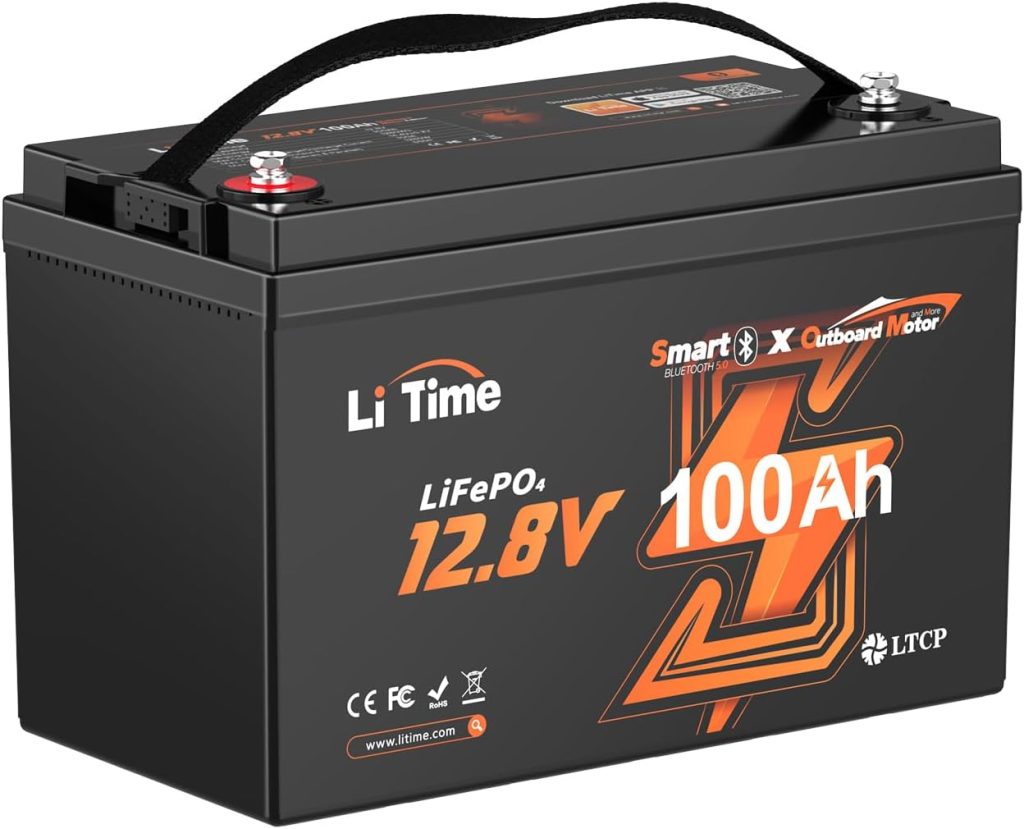
Pros and Cons:
- Pros:
- Lightweight: Lithium-ion batteries are significantly lighter than lead-acid batteries, which can improve your boat’s performance and handling.
- Longer Lifespan: These batteries can last up to 10 years or more, making them a cost-effective long-term investment.
- Fast Charging: Lithium-ion batteries charge much faster than lead-acid batteries, allowing for quicker turnaround times between trips.
- High Efficiency: They have a high energy density, meaning they can store more energy in a smaller space, and they discharge more efficiently, providing consistent power throughout their use.
- Low Maintenance: Lithium-ion batteries require little to no maintenance, making them a hassle-free option for many boaters.
- Cons:
- High Upfront Cost: Lithium-ion batteries are more expensive upfront, which can be a barrier for some boaters.
- Availability: While becoming more common, lithium-ion batteries are not as widely available as lead-acid batteries.
- Sensitive to Temperature: Extreme temperatures can affect the performance of lithium-ion batteries, particularly in very cold conditions.
- Complex Management System: These batteries often require a built-in Battery Management System (BMS) to ensure safe operation, which can add to the overall cost and complexity.
AGM (Absorbed Glass Mat) Batteries
Overview: AGM batteries are a type of lead-acid battery that uses a fiberglass mat to absorb the sulfuric acid, preventing it from spilling or leaking. This design makes AGM batteries maintenance-free and more durable than traditional flooded lead-acid batteries. They are sealed and can be mounted in any position, making them versatile for various applications. AGM batteries are known for their good performance and reliability, especially in demanding conditions.
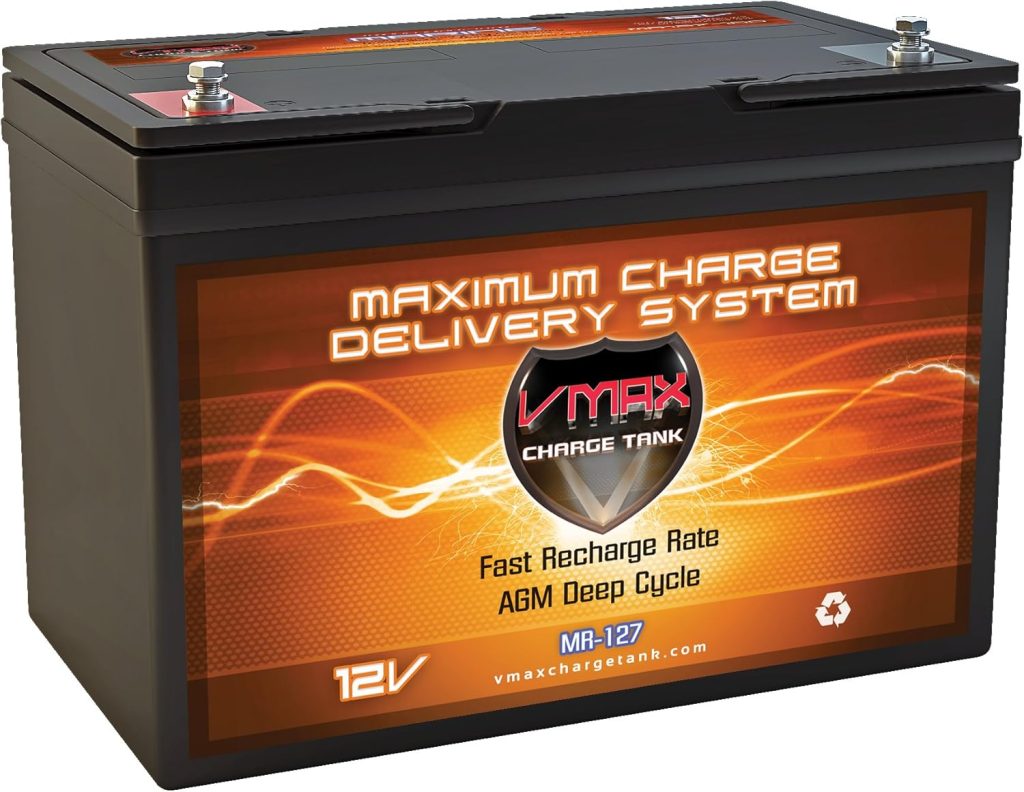
Pros and Cons:
- Pros:
- Maintenance-Free: AGM batteries do not require regular maintenance, such as checking water levels, making them a convenient option.
- Durable and Spill-Proof: The sealed design prevents leaks and makes AGM batteries more durable and resistant to vibrations and shocks.
- Longer Lifespan: AGM batteries typically last longer than standard flooded lead-acid batteries, offering better value over time.
- Fast Charging: They charge faster than traditional lead-acid batteries, reducing downtime between uses.
- Good Performance in Extreme Conditions: AGM batteries perform well in both hot and cold temperatures, making them suitable for a wide range of environments.
- Cons:
- Higher Cost: AGM batteries are more expensive than traditional lead-acid batteries, though they are still cheaper than lithium-ion batteries.
- Heavier Than Lithium-Ion: While lighter than flooded lead-acid batteries, AGM batteries are still heavier than lithium-ion options.
- Lower Energy Density: AGM batteries have a lower energy density compared to lithium-ion batteries, meaning they are bulkier for the same amount of power.
Gel Batteries
Overview: Gel batteries are another type of lead-acid battery that uses a gelified electrolyte, which is a silica-based compound that turns the liquid inside the battery into a gel. This design prevents the electrolyte from spilling, making gel batteries safe and reliable. They are similar to AGM batteries in that they are maintenance-free and can operate in various orientations. Gel batteries are particularly known for their ability to perform well in extreme temperatures and their longer lifespan compared to traditional lead-acid batteries.

Pros and Cons:
- Pros:
- Spill-Proof and Maintenance-Free: Gel batteries are sealed and do not require maintenance, making them easy to use and safe for various applications.
- Durable: The gel electrolyte is less likely to evaporate or leak, extending the battery’s lifespan and making it more reliable in harsh conditions.
- Good Performance in Extreme Temperatures: Gel batteries are less affected by temperature extremes, making them ideal for use in both hot and cold climates.
- Long Lifespan: Gel batteries generally have a longer lifespan than traditional lead-acid batteries, reducing the frequency of replacements.
- Cons:
- Higher Cost: Gel batteries are more expensive than standard lead-acid batteries, though they are often more affordable than lithium-ion batteries.
- Lower Power Output: Gel batteries typically have a lower power output compared to AGM and lithium-ion batteries, which may not be sufficient for high-demand trolling motors.
- Sensitive to Overcharging: Gel batteries can be damaged by overcharging, so it’s crucial to use a charger with the correct charging profile to prevent this issue.
- Heavier and Bulkier: Like other lead-acid batteries, gel batteries are heavier and bulkier than lithium-ion batteries, which can be a drawback for smaller boats.
Each type of battery has its strengths and weaknesses, and the best choice depends on your specific boating needs, budget, and how often you use your trolling motor. Whether you prioritize cost, performance, or maintenance-free convenience, understanding these differences will help you select the right battery to keep you powered up on the water.
Key Factors to Consider When Choosing a Battery
Selecting the right battery for your trolling motor is essential to ensure optimal performance and reliability on the water. Several key factors should be considered to make an informed decision. These factors will not only influence how well your trolling motor operates but also impact the overall boating experience, from the convenience of handling the battery to the longevity of your investment.
Battery Capacity
Battery Capacity refers to the amount of energy a battery can store, typically measured in ampere-hours (Ah). This is one of the most critical factors to consider because it directly affects how long your trolling motor can run before the battery needs recharging. A higher capacity means more stored energy, allowing for longer periods of use. For instance, if you plan to spend extended hours on the water, you’ll need a battery with a higher capacity to avoid running out of power. Conversely, if you only use your boat for short trips, a lower-capacity battery might suffice.
Deep Cycle vs. Cranking Batteries:
For trolling motors, deep-cycle batteries are generally preferred over cranking batteries because they are designed to provide a steady flow of power over a long period. Cranking batteries, on the other hand, are made for short bursts of energy to start an engine and are not suitable for prolonged use in trolling motors.
Impact on Performance:
A battery with insufficient capacity can lead to reduced motor performance, shorter run times, and potentially leaving you stranded on the water. Always choose a battery with a capacity that matches your usage patterns and the power demands of your trolling motor.
Battery Voltage
Battery Voltage is another crucial consideration, as it determines the power output of your trolling motor. Most trolling motors are designed to operate at specific voltage levels, commonly 12V, 24V, or 36V. The voltage required by your trolling motor will dictate the type and number of batteries you need.
12V Systems:
These are standard for smaller trolling motors and are usually powered by a single 12V battery. This setup is straightforward and cost-effective but offers less power and shorter run times.
24V and 36V Systems:
For larger motors or more demanding conditions, 24V or 36V systems are recommended. These setups typically require two or three 12V batteries connected in series, respectively. While they provide more power and longer run times, they also add to the overall weight and cost.
Compatibility:
Ensure the battery voltage matches the requirements of your trolling motor. Using a battery with incorrect voltage can damage your motor or significantly reduce its performance.
Battery Size and Weight
Battery Size and Weight are important factors, particularly if space is limited or if you need to frequently move the battery. The physical dimensions of the battery must fit the designated space on your boat, and the weight should be manageable if you plan to transport or handle the battery often.

Impact on Boat Performance:
Heavier batteries can affect the balance and speed of your boat, particularly in smaller vessels. A heavier battery might also be more challenging to install, remove, or replace.
Lithium-Ion vs. Lead-Acid:
Lithium-ion batteries are much lighter and more compact compared to traditional lead-acid batteries, making them an excellent choice for those who prioritize weight savings. However, they come at a higher cost.
Space Considerations:
Measure the available space in your boat’s battery compartment before purchasing a new battery. Overlooking this factor could result in buying a battery that doesn’t fit, causing inconvenience and potential safety issues.
Durability and Lifespan
Durability and Lifespan are critical for ensuring that your investment lasts as long as possible. Different types of batteries offer varying levels of durability and expected lifespan, which can influence your overall satisfaction and cost-effectiveness over time.
Lead-Acid Batteries:
Traditional flooded lead-acid batteries tend to have a shorter lifespan, usually 2-4 years, and require regular maintenance. Sealed lead-acid batteries, like AGM and gel types, offer longer lifespans and greater durability.
Lithium-Ion Batteries:
These batteries are known for their exceptional lifespan, often lasting 10 years or more with proper care. They are also highly durable, resistant to deep discharges, and capable of more charge cycles compared to lead-acid batteries.
Operating Conditions:
Consider the environments in which you’ll be using the battery. Batteries that will be exposed to extreme temperatures, vibrations, or rough handling should be chosen for their resilience to such conditions. AGM and lithium-ion batteries generally perform better in harsh environments.
Manufacturer’s Warranty:
Check the warranty offered by the battery manufacturer as it can be an indicator of the product’s expected lifespan and durability. A longer warranty typically reflects confidence in the battery’s quality and performance.
Cost-Effectiveness
Cost-Effectiveness involves evaluating not just the initial purchase price of the battery but also its long-term value, including maintenance costs, lifespan, and performance efficiency. While it might be tempting to choose the cheapest option, it’s important to consider the overall value.
Upfront Costs vs. Long-Term Savings:
Lead-acid batteries are generally more affordable upfront but may require more frequent replacements and regular maintenance, adding to the long-term cost. Lithium-ion batteries, although more expensive initially, often prove more cost-effective in the long run due to their extended lifespan, lower maintenance requirements, and better performance.
Efficiency and Power Usage:
More efficient batteries, such as lithium-ion, can provide better power output for the same or even smaller capacity, meaning you get more usage per charge. This efficiency translates into savings over time, particularly for frequent boaters.
Replacement Frequency:
Consider how often you’ll need to replace the battery. A cheaper battery might require replacement every couple of years, whereas a more expensive option could last a decade or longer, ultimately saving money and reducing hassle.
Maintenance Costs:
Batteries that require regular maintenance, like flooded lead-acid batteries, may have hidden costs in terms of time, effort, and materials (like distilled water for topping off). Maintenance-free options like AGM, gel, and lithium-ion batteries can save both money and effort over the battery’s lifespan.
By carefully considering these factors—battery capacity, voltage, size and weight, durability and lifespan, and cost-effectiveness—you can choose the right battery that best meets your needs, ensuring that your trolling motor performs reliably and efficiently on the water.Lead-Acid Batteries for Trolling Motors
Deep Cycle vs. Starting Batteries
When choosing the right battery for your trolling motor, understanding the difference between deep cycle and starting batteries is crucial. These two types of batteries serve different purposes, and selecting the wrong one can lead to suboptimal performance or even damage to your equipment. To answer the question, “what kind of battery for trolling motor” is best, it’s essential to know how each type operates and performs under various conditions. Here, we’ll explore the key distinctions between deep cycle and starting batteries, focusing on their maintenance requirements and performance in different conditions.
Maintenance Requirements
Deep Cycle Batteries: Deep cycle batteries are designed to provide a steady amount of power over a prolonged period, making them ideal for applications like trolling motors that require sustained energy output. One of the significant advantages of deep cycle batteries is their low maintenance requirements, especially in their sealed forms like AGM (Absorbed Glass Mat) and gel batteries.
Flooded Lead-Acid Deep Cycle Batteries:
These batteries require regular maintenance, such as checking the electrolyte levels and topping up with distilled water when necessary. It’s also essential to keep the terminals clean to prevent corrosion. However, these maintenance tasks are relatively straightforward and ensure the battery’s longevity.
Sealed Deep Cycle Batteries (AGM and Gel):
Sealed deep cycle batteries are virtually maintenance-free, as they are designed to prevent electrolyte evaporation and leakage. This makes them an excellent choice for boaters who prefer a hassle-free experience without the need for frequent upkeep.
Starting Batteries: Starting batteries, also known as cranking batteries, are built to deliver a quick burst of energy to start an engine. They are not designed for deep discharges and prolonged use, which means their maintenance needs differ from deep cycle batteries.
Flooded Lead-Acid Starting Batteries:
Like their deep cycle counterparts, flooded lead-acid starting batteries require regular maintenance, including checking electrolyte levels and cleaning terminals. However, because starting batteries are typically not discharged as deeply as deep cycle batteries, they may require less frequent maintenance.
Maintenance-Free Starting Batteries:
Some starting batteries are sealed and maintenance-free, similar to sealed deep cycle batteries. These are convenient for users who prefer minimal upkeep, but they still require attention to charging practices to avoid overcharging or undercharging, which can shorten the battery’s lifespan.
Key Takeaway: When considering “what kind of battery for trolling motor” is best, deep cycle batteries generally require less maintenance than starting batteries, especially if you opt for sealed versions. If you prefer minimal maintenance and reliable performance, a sealed deep cycle battery is the better choice for your trolling motor.
Performance in Different Conditions
Deep Cycle Batteries: Deep cycle batteries are engineered to withstand deep discharges and provide consistent power over extended periods, making them well-suited for trolling motors. Their performance in different conditions can vary depending on the type of deep cycle battery.
Temperature Sensitivity:
Deep cycle batteries, especially sealed types like AGM and gel, are designed to perform well in a range of temperatures. They can operate efficiently in both hot and cold environments, though extreme temperatures can still affect their performance. In cold conditions, deep cycle batteries may have reduced capacity, while in hot conditions, their lifespan could be shortened if they are not adequately maintained.
Discharge Depth:
Deep cycle batteries are designed to handle deep discharges regularly, which is a common scenario when using a trolling motor. They can be discharged to a significant percentage of their capacity without suffering permanent damage, making them ideal for long periods of continuous use.
Vibration and Shock Resistance:
Sealed deep cycle batteries, such as AGM and gel, are highly resistant to vibrations and shocks, making them suitable for use in rough water conditions. Their rugged design ensures they maintain consistent performance even in challenging environments.
Starting Batteries: Starting batteries are optimized for delivering a high burst of power to start an engine but are not designed for deep discharges or prolonged use. Their performance in various conditions is typically geared toward starting an engine rather than powering a trolling motor for extended periods.
Temperature Sensitivity:
Starting batteries can also be sensitive to extreme temperatures. In cold weather, their ability to deliver a quick burst of power may be diminished, potentially making it harder to start an engine. In hot conditions, the electrolyte in flooded starting batteries may evaporate more quickly, requiring more frequent maintenance.
Discharge Depth:
Unlike deep cycle batteries, starting batteries are not meant to be deeply discharged. Using a starting battery in place of a deep cycle battery for a trolling motor can lead to rapid depletion of the battery’s capacity, significantly shortening its lifespan and potentially damaging the battery.
Vibration and Shock Resistance:
While starting batteries can withstand some level of vibration and shock, they are generally not as robust as deep cycle batteries in this regard. Continuous exposure to rough conditions can negatively impact their performance and longevity.
Key Takeaway: For trolling motors, deep cycle batteries outperform starting batteries in terms of handling deep discharges, operating under varying temperatures, and withstanding vibrations and shocks. Starting batteries are more suited for their intended purpose of providing short bursts of power to start an engine and are not recommended for use with trolling motors.
In short, when determining “what kind of battery for trolling motor” is best, deep cycle batteries are the clear choice due to their ability to provide sustained power, their low maintenance requirements, and their robust performance across different conditions. While starting batteries are excellent for their intended purpose, they are not suitable for powering trolling motors and should not be used as a substitute. For a reliable and efficient boating experience, investing in a high-quality deep cycle battery is essential.
Lithium-Ion Batteries for Trolling Motors
When considering “what kind of battery for trolling motor” is best, lithium-ion batteries are often highlighted for their superior performance and modern technology. These batteries have rapidly gained popularity among boaters and anglers due to their numerous advantages over traditional lead-acid batteries. Understanding the benefits, costs, and environmental impact of lithium-ion batteries can help you make an informed decision about powering your trolling motor.
Advantages Over Lead-Acid Batteries
1. Lightweight and Compact Design:
One of the most significant advantages of lithium-ion batteries over lead-acid batteries is their lightweight and compact design. Lithium-ion batteries are often half the weight of their lead-acid counterparts, which makes them easier to handle and install. This reduced weight can significantly improve your boat’s performance, especially in smaller vessels where every pound counts. A lighter battery means less strain on the boat’s motor and better overall efficiency.
2. Longer Lifespan:
Lithium-ion batteries typically have a much longer lifespan compared to lead-acid batteries. While a lead-acid battery might last 2-4 years with regular use, a well-maintained lithium-ion battery can last up to 10 years or more. This extended lifespan means fewer replacements, saving you time and money in the long run. The longevity of lithium-ion batteries makes them a cost-effective choice for those who use their trolling motor frequently.
3. Faster Charging:
Another key advantage of lithium-ion batteries is their ability to charge much faster than lead-acid batteries. Lithium-ion batteries can reach full charge in a fraction of the time it takes to charge a lead-acid battery. This rapid charging capability is particularly beneficial for anglers who need to get back on the water quickly after a short break or for those who may have limited access to charging facilities.
4. High Efficiency and Consistent Power Output:
Lithium-ion batteries are known for their high efficiency and consistent power output. Unlike lead-acid batteries, which can experience a drop in voltage and performance as they discharge, lithium-ion batteries maintain a steady voltage throughout most of their charge cycle. This consistency ensures that your trolling motor performs at its best for longer periods, providing a more reliable and enjoyable boating experience.
5. Maintenance-Free:
Lithium-ion batteries require little to no maintenance, making them an attractive option for boaters who prefer a hassle-free experience. Unlike flooded lead-acid batteries, which need regular electrolyte checks and topping up, lithium-ion batteries are sealed and do not require any ongoing maintenance. This convenience allows you to focus more on enjoying your time on the water and less on battery upkeep.
Cost and Availability
1. Higher Initial Cost:
The primary drawback of lithium-ion batteries is their higher initial cost compared to lead-acid batteries. Lithium-ion technology is more advanced, which makes these batteries more expensive to produce. However, while the upfront cost is higher, the longer lifespan, better performance, and reduced maintenance requirements often justify the investment. Over time, the total cost of ownership for a lithium-ion battery can be lower than that of a lead-acid battery, especially for frequent users.
2. Availability and Market Growth:
As lithium-ion batteries have become more popular, their availability has increased significantly. They are now widely available from various manufacturers and can be purchased online or at specialized marine and boating stores. The growing demand for lithium-ion batteries has also led to more competitive pricing, making them more accessible to a broader range of consumers. However, it’s still important to source your battery from reputable brands to ensure quality and reliability.
3. Cost Comparison Over Time:
When evaluating “what kind of battery for trolling motor” is most cost-effective, it’s essential to consider the long-term costs. While lithium-ion batteries are more expensive upfront, their longer lifespan and lower maintenance costs can make them more economical in the long run. For example, you might need to replace a lead-acid battery two or three times over the same period that a single lithium-ion battery lasts, making the initial investment more worthwhile.
Environmental Impact
1. Reduced Environmental Footprint:
Lithium-ion batteries are generally considered to have a lower environmental impact than lead-acid batteries. They are more energy-efficient and have a longer lifespan, which means fewer batteries are produced, used, and disposed of over time. Additionally, lithium-ion batteries do not contain toxic lead, which can be harmful to the environment if not properly disposed of. This makes them a greener choice for eco-conscious boaters.
2. Recyclability and Disposal:
While lithium-ion batteries are recyclable, the recycling process is more complex and less widespread compared to lead-acid batteries. However, the industry is making strides in improving lithium-ion battery recycling methods. It’s important to ensure that when your lithium-ion battery reaches the end of its life, it is disposed of properly through a recycling program that can handle this type of battery, thus minimizing its environmental impact.
3. Lower Emissions During Use:
Because lithium-ion batteries are more efficient and require less frequent charging, they contribute to lower overall emissions during their use. This is particularly relevant if you’re charging your battery from the grid, as less energy consumption translates to fewer fossil fuels burned to generate that electricity. Additionally, the absence of acid spills and lower risk of leaks further reduces their environmental impact compared to lead-acid batteries.
When deciding “what kind of battery for trolling motor” is best, lithium-ion batteries stand out for their numerous advantages over lead-acid batteries, including their lightweight design, longer lifespan, faster charging, high efficiency, and minimal maintenance. Although they come with a higher initial cost, their long-term value and lower environmental impact make them a compelling option for modern boaters. As lithium-ion technology continues to advance and become more affordable, it is likely to remain a top choice for trolling motor batteries for years to come.
AGM Batteries for Trolling Motors
When deciding “what kind of battery for trolling motor” is best, AGM (Absorbed Glass Mat) batteries emerge as a strong contender. AGM batteries are a specialized type of sealed lead-acid battery designed to meet the specific demands of marine applications, making them ideal for powering trolling motors.
How AGM Batteries Work
AGM batteries utilize a fiberglass mat to absorb and immobilize the electrolyte, preventing it from spilling or leaking. This design allows the battery to be completely sealed, making it maintenance-free and safe for various mounting positions. The immobilized electrolyte also enhances the battery’s resistance to vibration and shock, which are common in marine environments. Unlike traditional flooded lead-acid batteries, AGM batteries do not require regular watering, reducing the need for frequent maintenance and ensuring consistent performance.
Benefits for Trolling Motors
- Maintenance-Free Operation: AGM batteries eliminate the need for regular maintenance, such as checking and refilling electrolyte levels. This convenience is particularly beneficial for boaters who prefer a hassle-free power source, allowing them to focus more on enjoying their time on the water.
- Enhanced Durability: The robust construction of AGM batteries makes them highly resistant to vibrations and shocks, ensuring reliable performance even in rough water conditions. This durability is crucial for maintaining consistent power to your trolling motor, preventing unexpected power losses during use.
- Longer Lifespan: AGM batteries typically offer a longer lifespan compared to traditional flooded lead-acid batteries, often lasting between 4 to 7 years with proper care. This extended durability reduces the frequency of battery replacements, providing better long-term value and reliability for your trolling motor.
- Better Performance in Cold Weather: AGM batteries perform efficiently in cold temperatures, making them suitable for use in various climates. This ensures that your trolling motor operates smoothly even in chilly conditions, enhancing your overall boating experience.
- Fast Charging: AGM batteries can be charged faster than traditional lead-acid batteries, minimizing downtime and allowing you to get back on the water more quickly. This rapid charging capability is especially useful for anglers who need to maximize their time on the water.
Limitations to Consider
- Higher Cost: AGM batteries come with a higher initial price tag compared to standard lead-acid batteries. While their longer lifespan and maintenance-free nature can offset the upfront cost over time, the higher price may be a consideration for budget-conscious boaters.
- Sensitive to Overcharging: AGM batteries are more sensitive to overcharging, which can significantly reduce their lifespan and performance. It is essential to use a compatible charger and monitor the charging process carefully to prevent overcharging and ensure the longevity of the battery.
- Lower Energy Density Compared to Lithium-Ion: Although AGM batteries are lighter and more compact than traditional lead-acid batteries, they still lag behind lithium-ion batteries in terms of energy density. This means they can be bulkier and heavier than lithium alternatives, which may be a drawback for those prioritizing weight reduction in their setup.
- Temperature Sensitivity: While AGM batteries perform well in cold conditions, extreme heat can still negatively impact their lifespan. Proper ventilation and temperature management are necessary to maintain optimal performance and extend the battery’s useful life.
However, when evaluating “what kind of battery for trolling motor” is best, AGM batteries offer a balanced combination of durability, maintenance-free operation, and reliable performance. Despite their higher initial cost and some sensitivity to charging conditions, the benefits of AGM batteries make them an excellent choice for many boaters seeking a dependable and efficient power source for their trolling motors.
Gel Batteries for Trolling Motors
When considering “what kind of battery for trolling motor” is suitable, gel batteries are a noteworthy option. These batteries are a type of sealed lead-acid battery known for their stability and reliability in various marine applications.
Gel Battery Technology
Gel batteries use a thickened electrolyte made from sulfuric acid and silica, which forms a gel-like substance. This design prevents the electrolyte from spilling or evaporating, making gel batteries completely sealed and maintenance-free. The gelled electrolyte also allows the battery to be mounted in any position without the risk of leakage, adding to their versatility.
Benefits and Drawbacks
Benefits:
- Maintenance-Free: Gel batteries require no maintenance, eliminating the need for regular checks or refills, which is a significant convenience for boaters.
- Deep Discharge Capabilities: They are designed to handle deep discharges without damaging the battery, providing consistent power over long periods, ideal for trolling motors.
- Vibration and Shock Resistance: Gel batteries are highly resistant to vibrations and shocks, ensuring reliable performance even in rough water conditions.
- Stable Performance in Extreme Temperatures: Gel batteries perform well in both high and low temperatures, making them suitable for various climates.
Drawbacks:
- Higher Cost: Gel batteries are more expensive upfront compared to traditional lead-acid batteries, which might be a consideration for those on a budget.
- Sensitive to Overcharging: They can be damaged by overcharging, so careful monitoring and the use of a compatible charger are essential.
- Lower Power Output: Gel batteries have slightly lower power output compared to AGM or lithium-ion batteries, which might limit performance in some high-demand scenarios.
Suitability for Trolling Motors
Gel batteries are a solid choice for trolling motors, especially if you prioritize maintenance-free operation and durability in challenging conditions. Their ability to handle deep discharges and maintain stable performance in various environments makes them suitable for extended boating trips. However, the higher cost and sensitivity to overcharging are factors to consider when deciding “what kind of battery for trolling motor” is best for your needs.
Battery Chargers and Maintenance
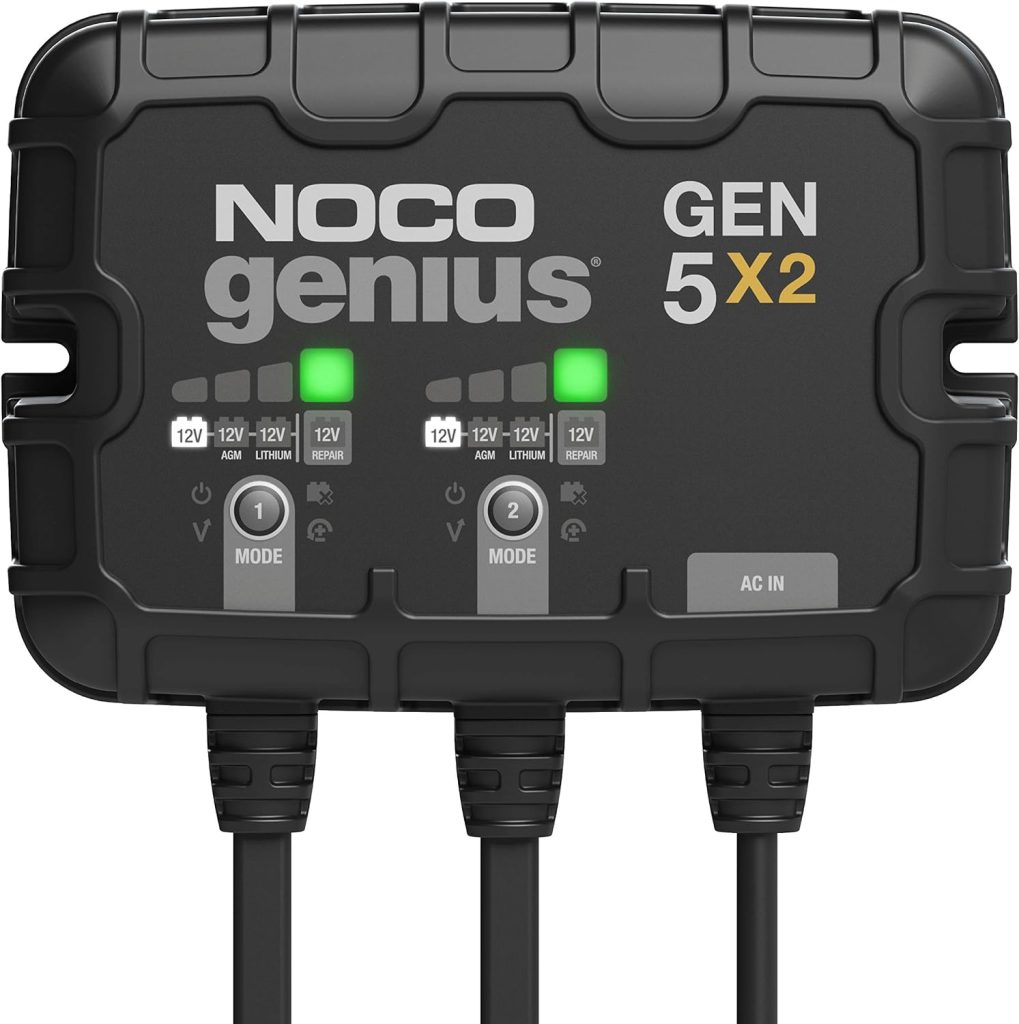
Choosing the Right Charger
Selecting the right charger is just as important as choosing the right battery. Ensure that the charger is compatible with your battery type and provides the appropriate charging profile to avoid overcharging or damaging the battery.
Proper Charging Techniques
Always charge your battery in a well-ventilated area and follow the manufacturer’s instructions for charging. Avoid overcharging or undercharging, as this can shorten the battery’s lifespan.
Maintenance Tips for Longevity
Regular maintenance, such as cleaning the terminals and checking the battery’s condition, can extend its lifespan and ensure reliable performance. For lead-acid batteries, this may also include topping off the water levels.
Comparing Battery Performance
Runtime Expectations
Different batteries offer varying runtimes, depending on their capacity and the power demands of your trolling motor. Higher capacity batteries generally provide longer runtimes, but this comes at the cost of increased size and weight.
Power Output
Power output is a critical factor, especially for larger boats or when navigating rough waters. Ensure that the battery you choose can deliver the necessary power without straining the motor.
Charge and Discharge Cycles
Batteries have a limited number of charge and discharge cycles before their performance starts to degrade. Lithium-ion batteries generally offer more cycles than lead-acid or gel batteries, making them a better long-term investment.
Best Batteries for Specific Trolling Motor Setups
Small Boats and Kayaks
For smaller boats and kayaks, a lightweight lithium-ion battery is often the best choice due to its compact size and long lifespan. Alternatively, an AGM battery can also be a good option if you’re looking for a more affordable solution.
Medium-Sized Boats
Medium-sized boats benefit from a balance of power and runtime, making AGM or gel batteries a suitable choice. These batteries provide reliable performance without adding too much weight.
Large Boats and Professional Use
For large boats or professional use, a high-capacity lithium-ion battery is often the best option. These batteries provide the necessary power and runtime to handle demanding conditions and extended trips.
Safety Considerations When Using Trolling Motor Batteries
Handling and Installation
Proper handling and installation are crucial for battery safety. Always follow the manufacturer’s guidelines and take care to avoid short-circuiting the battery or damaging the terminals.
Storage Guidelines
Store your battery in a cool, dry place when not in use, and ensure it’s fully charged before storing. This helps prevent sulfation in lead-acid batteries and extends the overall lifespan of all battery types.
Dealing with Battery Failures
If your battery fails to hold a charge or shows signs of damage, it’s essential to address the issue promptly. Depending on the battery type, this may involve replacing the battery or taking it to a professional for repair.
Environmental Impact of Trolling Motor Batteries
Disposal and Recycling
Proper disposal and recycling of old batteries are crucial for environmental protection. Most types of batteries can be recycled, and many retailers offer recycling services.
Eco-Friendly Options
Consider choosing a battery with a lower environmental impact, such as a lithium-ion battery, which has fewer toxic components and a longer lifespan.
Cost Analysis: Which Battery Gives the Best Value?
Upfront Costs
While lead-acid batteries are cheaper upfront, their shorter lifespan and higher maintenance costs can add up over time. Lithium-ion batteries, although more expensive initially, often provide better long-term value.
Long-Term Savings
Lithium-ion batteries generally offer the best long-term savings due to their extended lifespan and minimal maintenance requirements.
Return on Investment
When considering the return on investment, it’s essential to factor in not just the battery’s cost but also its performance, durability, and how well it meets your specific needs.
FAQs About Trolling Motor Batteries
How long does a trolling motor battery last?
The lifespan of a trolling motor battery depends on the type and how well it is maintained. Lead-acid batteries typically last 2-4 years, while lithium-ion batteries can last 10 years or more with proper care.
Can I use a car battery for my trolling motor?
While it’s technically possible to use a car battery, it’s not recommended. Car batteries are designed for short bursts of high power, whereas trolling motors require a steady flow of power over a longer period.
How do I know when my battery needs replacing?
Signs that your battery needs replacing include reduced runtime, difficulty holding a charge, and visible signs of damage, such as swelling or leaking.
What is the best way to store my battery during the off-season?
Store your battery in a cool, dry place, and ensure it’s fully charged before storing. For lead-acid batteries, check the water levels and top them off if necessary.
How do temperature changes affect battery performance?
Extreme temperatures can significantly impact battery performance. Cold weather can reduce the battery’s capacity, while excessive heat can shorten its lifespan.
Conclusion: what kind of battery for trolling motor
Choosing the right battery for your trolling motor is essential for ensuring a smooth and enjoyable boating experience. Whether you opt for a traditional lead-acid battery, a modern lithium-ion option, or something in between, consider your specific needs, budget, and the conditions you’ll be operating in. By making an informed choice, you can maximize your time on the water and minimize the hassles of battery maintenance.

